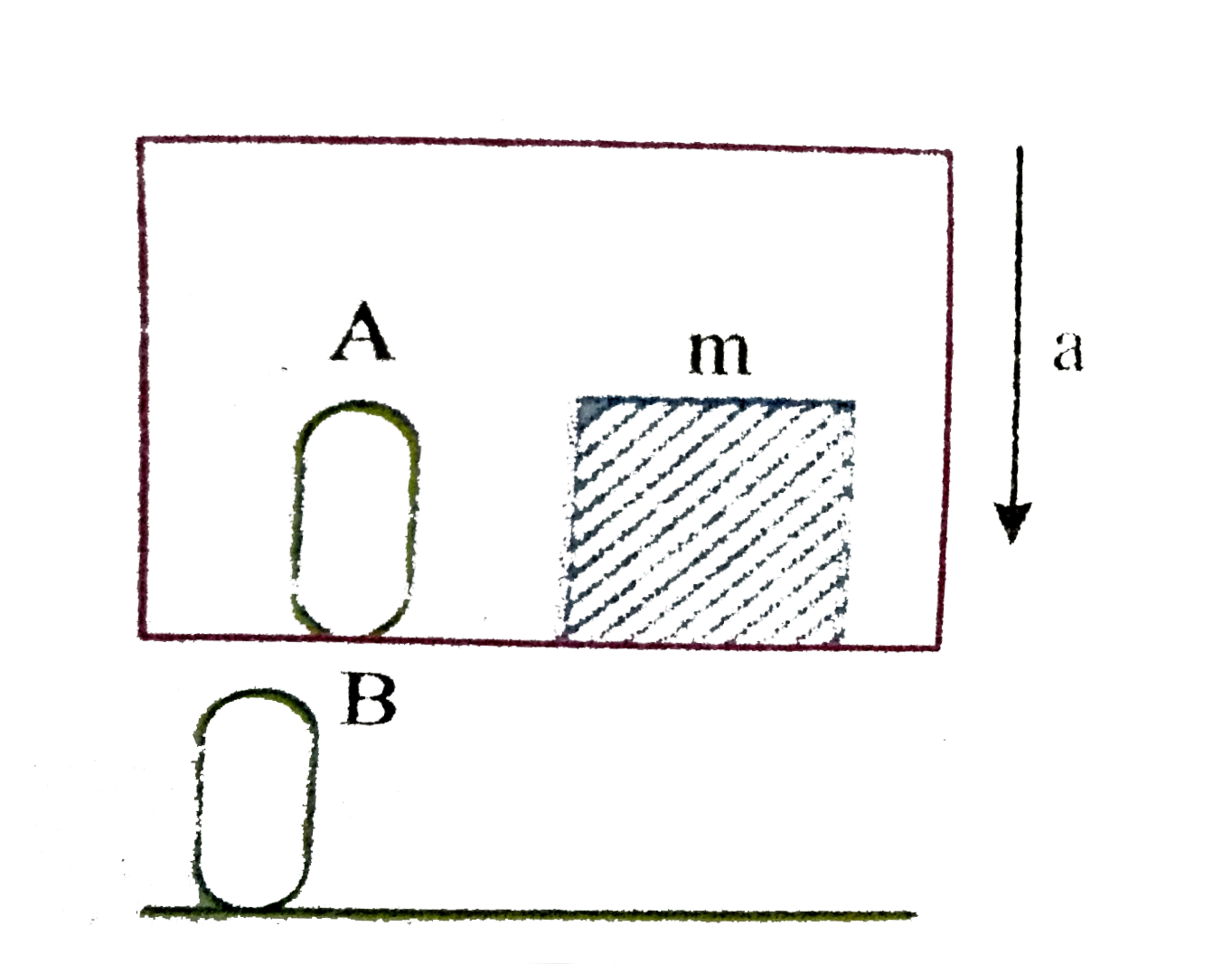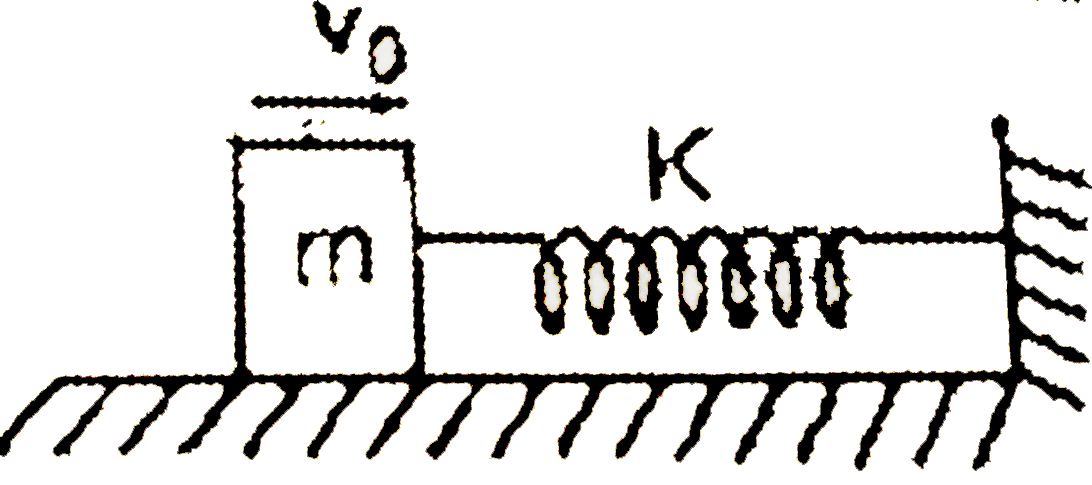Consider two observers moving with respect to each other at a speed v along a straight line. They observe a block of mass m moving a distance 1 on a rough surface. The following quantities will be same as observed by the two observersSolution in Tamil
kinetic energy of the block at time t
work doen by friction
total work done the block
acceleration of the block
The correct Answer is:D
Step by step video & image solution for Consider two observers moving with respect to each other at a speed v along a straight line. They observe a block of mass m moving a distance 1 on a rough surface. The following quantities will be same as observed by the two observers by Physics experts to help you in doubts & scoring excellent marks in Class 11 exams.
Updated on:21/07/2023Topper's Solved these Questions
Similar Questions
The mass of a cyclist together with the bicycle is 90 kg. Calculate the work done by cyclist if the speed increases from 6km/h to 12 km/h.
View SolutionA heavy stone is thrown from a cliff of height h with a speed v. The stone will hit the ground with maximum speed if it is thrown
View SolutionA wave pulse passing on a string with speed of 40cms−1 in the negative x direction has its maximum at x=0 at t=0. Where will this maximum be located at t=5s?
View SolutionAn observer moves on the same line on which two sources of sound of frequency 660 Hz are present. The observer observes beat frequency of 10Hz . If speed of sound is 300m//s then speed of the observer is:
View SolutionAn observer moves with a constant speed along the line joining two stationary objects. He will observe that the two objects
View SolutionAn observer moves towards a plane mirror with a speed of 2msec. The speed of the image with respect to the observer is
View SolutionA block of mass m is kept in an elevation which starts moving downward with an acceleration 'a' as shown in figure. The block is observed by two observers A and B for a time interval t0.
 .
.
The observer B finds that the work done by gravity on the block is :
View SolutionA block of mass m is kept in an elevation which starts moving downward with an acceleration 'a' as shown in figure. The block is observed by two observers A and B for a time interval t_(0) . . According to observer B , the net work done on the block is :
View SolutionIf an observer is moving with respect to a stationary electron, then he observes
View SolutionA block of mass m moving with a velocity v0 on a smooth horizontal surface strikes and compresses a spring ofstiffuess k till mass coines to rest as shown in the figure. This phenomenon is observed by two observers :
(a) Standing on the horizontal surface
(b) standing on the block

To an observer B, when the block is compressing the spring :
View SolutionAn observer moves with a constant speed along the line joining two stationary objects. He will obserbe that the two objects
View Solutionदो स्वरित्र जिनमे प्रत्येक की आवृति 340 हर्ट्ज है, एक स्थिर प्रेक्षक के सापेक्ष गतिमान हैं। एक स्वरित्र प्रेक्षक से दूर जा रहा है, जबकि दूसरा समान चाल से प्रेक्षक की ओर आ रहा है। प्रेक्षक को प्रति सेकण्ड 3 विस्पंद सुनायी देते हैं। स्वरित्र की चाल ज्ञात कीजिये (वायु में ध्वनि में चाल = 340 मी/सेकण्ड)
View Solutionएक प्रेक्षक v वेग से प्रकाश स्त्रोत की और गतिमान है|प्रेक्षक को प्रकाश का वेग प्रतीत होगा-
View Solutionएक सरल रेखा के अनुदिश दो प्रेक्षक एक-दूसरे के सापेक्ष D वेग से गतिशील हैं। ये प्रेक्षक m द्रव्यमान के एक गुटके को एक खुरदरी सतह पर बिंदु A से बिंदु B तक गति करता हुआ देखते हैं। नीचे दी गई। राशियों में से किस राशि का मान दोनों प्रेक्षक बराबर बताएँगे?
View SolutionConsider the droppler effect in two cases. In the first case an observer moves towards a stationary sound-source, with a speed V1. In the second case, the observer is at rest, and the source moves towards the observer with the same speed V1. Then the frequency heard by the observer
View SolutionWhat is meant by Doppler effect? Discuss the following cases. (1) Sources in motion and Observer at rest (a) Source moves towards observer (a) Source moves towards observer (b) Source moves away from the observer (2) Observer in motion and Source at rest. (a) Observer moves towards Source. (b) Observer recedes away from the Source. (3) Both are in motion (a) Source and observer approach each other (b) Source and Observer resides from each other ( c) Source chases Observer (d) Observer chases Source.
View Solution
